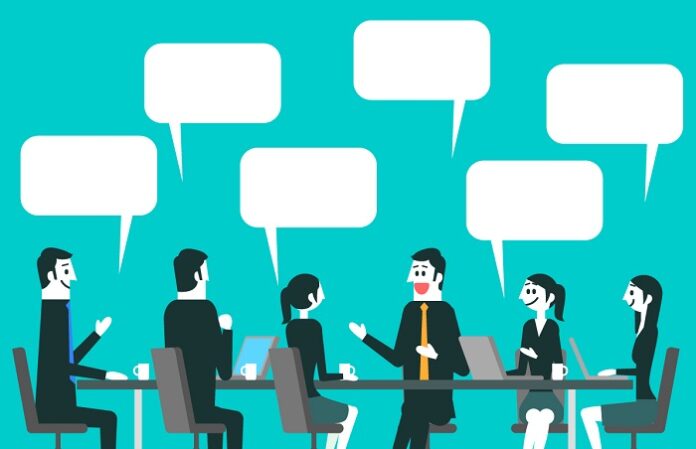Only a few things are as frustrating as striving to say something to someone who can’t make meaning out of what you are telling them. While universal languages like English, Spanish, Arabic, and the rest of their kinds have gone a long way in bridging the communication gap across the globe, there are critical communication barriers that still engender ineffective communication and the consequences of this can be costly for people engaged in an interpersonal conversation, just as it can be for any other type of communication. For instance, it has been suggested that the two nuclear weapons which have been used in the course of warfare might have been avoided if not for a gross misunderstanding of a correspondence.
As it happened, the United States, towards the end of World War II, detonated Little Boy and Fat Man respectively over Hiroshima and Nagasaki in Japan. The weapons of mass destruction claimed at least 200,000 lives which might not have happened if there wasn’t a misinterpretation of a message the Japanese sent in response to the Allied Powers’ ultimatum for them to surrender. The Japanese had responded with the word “mokusatu” which was meant to mean they were reserving comment, but the Allied Powers were told that the response meant the Japanese were ignoring the ultimatum; this fostered the decision to use nuclear weapons.
An Overview of What Communication Barrier Is All About
If anything, the narrative above shows that ineffective communication can bring about dire consequences. For communication to be effective, the people involved must have the same understanding of what they are saying to each other. That is, whatever that is being said must not be misinterpreted in any way. To get rid of misunderstandings, it becomes crucial for one to be aware of the factors that constitute a barrier to effective communication.
In a nutshell, communication barriers refer to anything that enables ineffective communication. In the communication process which largely revolves around the sender, message, medium, and receiver, there are circumstances capable of distorting the message at each point of the process. When this happens, there is a big chance the message wouldn’t be received exactly as the sender intended.
Based on what various studies have uncovered, communication barriers have ruined many relationships and compromised numerous diplomacy efforts. From ambiguity to the use of jargon and what have you, the things that constitute ineffective communication are often grouped into different categories that include linguistic, psychological, physical, cultural, and attitudinal barriers. As you would soon learn, each of these has a way of hindering effective interpersonal conversations.
Making Sense of Attitudinal Barriers to Effective Interpersonal Communication
First of all, you should know that interpersonal communication boils down to the exchange of information between two or more people. Like other types of communication, apart from intrapersonal communication which happens within oneself, interpersonal communication takes various forms like face-to-face exchanges, gestures, and facial expressions. Attitudinal barriers to effective interpersonal conversation refer to behaviors that make it difficult for people to have effective communication.
Humans have different behaviors. For instance, while some are socially awkward and introverts, others are extroverts and easily distracted. There are those who can’t concentrate because they are always trying to listen to more than one conversation in a go, and some who would rather focus on their feelings about the communicator, or get preoccupied with issues that have been bothering them. All of these are barriers to effective listening and consequently lead to communication failure.
The problem isn’t limited to those meant to listen, in equal measure, the sender can exhibit attitudes that create a barrier to effective interpersonal communication, as much as the receiver. If a communicator is fond of using complicated and technical terms, talks too much, or has a weird personality, he or she is bound to distract the listeners or bore them out of listening.
How Cultural Barriers Affect Interpersonal Communication
This is common when the people involved in the conversation are from diverse backgrounds and heritage. Given that different cultures have some peculiar values, it can be difficult for people from different social settings to get along, especially when they are holding on to the stereotypical sentiments people have about others based on their cultural identity. Add that to the fact that people from various cultures have different thought patterns and ways of communication, it becomes pretty obvious how culture can amount to a barrier to effective communication.
Our cultures account for differences in language and dialects. So, for an effective interpersonal conversation, the parties involved must find a common language and dialect. This is crucial as it is the only way to assure they are aware of the exact meaning of words. Disregarding language, there are other sources of cultural barriers like norms, values, beliefs, gestures, and body language.
Take France, for instance: it is customary to greet people by touching their face with your face. Greeting a female, in the same manner, in countries like Saudi Arabia is nothing short of a moral crime.
What are the Physical Barriers to Successful Communication?
Physical barriers are the most recognizable factors that prevent effective communication. They are often grouped into natural and environmental barriers and the former refers to natural elements like rain, thunder, or wind, which makes it difficult for people to have a successful conversation.
The environmental part has to do with things like distance, swinging or closed doors, or a wall between the sender and the receiver. Faulty equipment, poor network coverage, and noise are also elements of physical barriers to communication.
Psychological Barriers to Effective Communication
There is a thin line between attitudinal and psychological barriers. If there is any difference, it’s the fact that the former concentrates on behaviors that inhibit effective communication whereas psychological barriers cover both the behavior and state of mind of those involved in a conversation. In essence, the things that constitute psychological barriers to effective communication boils down to the psychological state of the communicators.
As the things that are said in a conversation originates from the brain, it is not hard to see how psychological barriers could create an obstacle for effective communication. People have various psychological conditions that can make them quickly jump to conclusions or close-minded. Emotions, opinions, perceptions, distrust, lack of attention, and poor retention are all among the things that cause psychological barriers to effective conversations.
And, any given psychological state can influence how a message is sent and how it was received. To cite an instance, someone who is concerned about his or her marriage being on the verge of collapse wouldn’t be so interested in a conversation about increasing productivity at the workplace.
How Linguistic Barriers Hinder Effective Interpersonal Conversation
Language has always been an important aspect of communication and consequently, a major factor that limits people from having an effective conversation. Given that almost everyone relies on language for communication, the fact that there are no fewer than 6,909 distinct languages in the world is a barrier to communication.
Thankfully, there are universal languages that have helped the world to deal with this problem. But then, each of these languages has dialects which create room for ambiguity and misinterpretation. As such, for an interpersonal conversation to be effective, it is paramount for the communicators to utilize not only the same language but the same dialect.
Linguistic barriers to effective communication go beyond language to include stuff like grammar, spelling mistakes, poor handwriting, typing error, and the use or misuse of figurative expressions.
Based on the foregoing, it is somewhat easy to see why people might regard the concept of communication barriers as a synonym for language barriers. While there is nothing fundamentally wrong with this, it implies a neglect of all the other barriers to effective communication. Even though the language barrier is intrinsically a communication barrier, it is inadequate to regard communication barriers only as a language barrier.
Even as it has been upheld that language barriers are the most common form of communication barriers, there are other enablers of ineffective communication which are grouped under psychological barriers, physical barriers, cultural barriers, and what have you.
Useful Guide on How to Ensure Effective Communication
Effective communication implies that the intent and purpose of an exchange is actualized. The message must be decoded and understood by the receiver exactly as the sender intended. So, for a conversation to be effective, both the sender and the receiver have a role to play. For the sender, it is important to possess a set of communication skills that would command the receiver’s attention and keep them willing to hear whatever you have to say. To eliminate the possibility of a misunderstanding during a conversation, communicators should observe the following as a guide.
Keep the Message Short and Simple
This is a golden rule for effective communication. Regarded as the KISS rule in some quarters, it calls for communicators to keep it (their messages) short and simple (KISS). Massages that are brief and straight to the point are easier to process and assimilate. In view of that, communicators must strive to avoid unnecessary information and irrelevant details while having a conversation. Else, they risk the chance of being misunderstood.
As much as it is crucial to only dwell on the key points, one has to communicate in a clear manner. What has to be said must be said without technical terms and jargons. Also, the message must not be open to more than one interpretation. Such inexactness is bound to lead to misinterpretation.
Avoid Incomplete Messages and Be Credible
Credibility has to do with how objective or subjective your messages are. For a conversation to be effective, one has to carefully separate portions of the message that are based on facts and evidence from those that are based on feelings and opinions. Doing otherwise might leave the receiver confused on what to prioritize among the information received.
Being credible would go a long way in building confidence and trust between the communicators, allowing them to ask for clarification if need be. In addition to that, no fact should be left out as the complete assimilation of the information meant to be passed across depends on the receiver being aware of all the facts.
Be Confident but Respectful
You can’t talk down on someone and expect him or her to pay attention to what you have to say subsequently. To have an effective conversation, those involved must dialogue with mutual respect and be polite in expressing opinions that go against the other person’s point of view.
Nevertheless, one must not sacrifice being confident while getting his or her messages across in the name of being respectful. People tend to listen attentively to people who exude confidence while they are speaking.
Your Messages Must Be Error-free
One can only be careful enough in avoiding sending out messages that are error-free. Nonetheless, being conscious of that would help one cross-check the information he or she is passing across to ensure they are accurate and that there are no grammatical errors.
While making mistakes can be unavoidable, do not be unwilling to correct the error. When a mistake has been made, one must clearly specify what the mistake was, and repeatedly correct it using simple words.
Keep Your Body Language Natural and Use Illustrations and Examples
Body language has never ceased to be an important element in communication. Factors like a communicator’s stance, hand gestures, and eye contact goes a long way in facilitating an effective conversation. Although it has been advised for one to be natural as much as possible, gesticulating too much can be a source of distraction, so curtail it. More so, be calm and control your breathing. All of these would make you appear to be confident, which translates to someone worth listening to.
Using illustrations and examples are also a good way of aiding effective communication, so, do not hesitate to use them when you are certain they will help your audience fully understand the information you are disseminating.
Always Use the Appropriate Medium
The importance of knowing one’s audience in the communication process can never be understated. Among other things, this would make it possible for you to know the appropriate medium to use. If your receiver is someone who has a hard time reading, it wouldn’t be wise to converse with him or her through written words.




